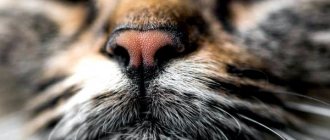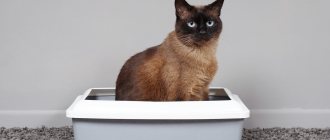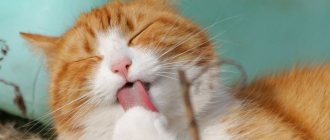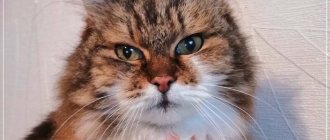Photo: UGC The herb mint is popular for its strong aroma. There are many varieties of it, which have distinct odors. In particular, catnip has a lemony smell. It received this name because pets fall into euphoria after smelling this plant and behave unusually under its influence. Catnip is famous for this, but humans need it due to other beneficial qualities.
Catnip and its relatives
The name “catnip” usually refers to different types of catnip. Their common Latin name is Nepeta. The most common catnip is Nepeta cataria, also known as "lemon" or "mint".
This plant also has a number of popular names: fragrant horehound, sore grass (Ryazan region), cat grass, cat grass (Voronezh region), forest nettle, magpie, cat drink.
Catnips belong to the Lamiaceae family, which makes them distant relatives of the well-known basil, rosemary, thyme, sage, marjoram, and others.
The easiest way to confuse catnip with regular peppermint and lemon balm.
Peppermint leaves are darker, oblong, smooth, without edges. The flowers are located at the top of the stem (in catnip - along the entire brush). But the main difference between these two plants is the smell: strong, fresh, menthol - in peppermint and a more subtle “lemon” - in its “brother”.
Melissa and catnip are much easier to confuse. They are the same size and smell a little similar (they both have a specific “lemon” tint). But, if you look closely at the leaves, you will notice that the leaves of the catnip are more pubescent, pointed, with a heart-shaped base (similar to a card suit of spades), while those of the lemon balm are rounded at the bottom, without a cutout. The plant bush is also different: catnip is more powerful and branched.
What all these plants have in common is that their leaves contain essential oils used in the production of seasonings and perfumes. In catnip, the main component is nepetalactone, which gives it a lemony smell and has an effect on cats.
Catnip is actively used in folk medicine: for sedative (calming) purposes (in the form of tea), and also as an adjuvant in the treatment of bronchitis, anemia, migraines, etc. In the chemical industry, nepetalactone is used in the production of repellents (insect repellents) .
Photo gallery: catnip and its “relatives” - peppermint and lemon balm
Catnip leaves are similar to the suit of spades - they have a cutout at the bottom
Peppermint leaves are darker, oblong, smooth
Melissa leaves are more saturated green, without a cutout at the bottom
Catnip flowers are darker, purple, located throughout the brush
Peppermint flowers are located at the top of the stem
Melissa flowers are light pink, concentrated on the upper part
Useful and harmful properties
Benefits for the body Useful for the functioning of the cardiovascular system.
Accelerates heart rate, recommended for bradycardia. Reduces blood pressure and blood sugar levels. Read also: Cloves (spice) - description of the plant, benefits and harms, composition, application.
It has choleretic, antibacterial, bactericidal, antipyretic, anti-inflammatory and anthelmintic properties.
Improves the functioning of the gastrointestinal tract. Helps in the treatment of gastritis with low acidity, fights constipation, flatulence and intestinal antonia. Improves intestinal motility.
Normalizes the functioning of the nervous system. Helps with depression, insomnia, melancholy, apathy and hysterical attacks. Has a calming effect.
It has expectorant properties and is used for bronchitis and other respiratory diseases.
Thanks to its diuretic effect, it helps fight swelling.
Recommended for diseases of the oral cavity, relieves toothache, and is used in the treatment of sore throat.
Effective in the treatment of skin diseases such as eczema, scabies, boils, acne.
Harm to the body Contraindicated in case of allergies, individual intolerance, during pregnancy and lactation.
The effects of catnip on a cat
Surprisingly, the effect of catnip on an animal can vary greatly depending on how the cat “took” it. So, if the sense of smell comes into play (for example, a cat sniffed a toy to which catnip was added), after a while the situation will resemble estrus: the animal rubs its head and body on the grass and floor, jumps, rolls, makes calling sounds and purrs. However, the strong effect of excitement will stop after 10–15 minutes. After this, you will have to wait at least another half hour before the cat again shows interest in the toy.
When eaten, catnip produces the opposite effect: it has a mild calming effect..
It’s not just our pets that can react to catnip. “Big cats”: tigers, leopards, jaguars, lions - also cannot resist him.
Not all cats react the same way to catnip. Sensitivity to it is inherited, and if a particular individual has not received the corresponding gene, it will be indifferent to the smell, which is so tempting for its other comrades. It is also worth noting that kittens up to 3–6 months old (before the age of puberty) are not attracted to it at all, and are even repelled by it. About a third of all mustachioed tabbys are, in principle, indifferent to the smell of catnip and do not pay attention to it either in toys or on a walk.
Video: cat and catnip
The use of catnip in landscape design
Best materials of the month
- Coronaviruses: SARS-CoV-2 (COVID-19)
- Antibiotics for the prevention and treatment of COVID-19: how effective are they?
- The most common "office" diseases
- Does vodka kill coronavirus?
- How to stay alive on our roads?
Beautiful purple catnip flowers are often pleasing to the eye in garden plots and are used for decorative purposes.
It looks impressive on alpine slides, rockeries and mixborders. Catnip goes well with tansy, phlox, meadow geranium, anafalis and santolin.
Medium-sized plants will decorate borders, hedges and borders. Low-growing grass can be used to decorate the trunks of shrubs or trees.
Moreover, catnip can be used not only for open ground. It will look pretty in pots and fill the room with its wonderful aroma.
Mechanisms of action of catnip on cats
The reason for the effect of this plant on cats is that the essential oil, when it enters the animal’s nose, is believed by scientists to “mimic” the release of pheromones.
Nepetalactone, one of the essential oils contained in catnip, enters the cat's nose and affects the nasal tissue, where scientists believe it binds to a receptor protein that stimulates sensory neurons. These, in turn, trigger a response in the neurons of the olfactory bulb, which affect several areas of the brain, including the amygdala (two neuronal clusters in the brain that cause emotional responses to stimuli) and the hypothalamus, the main gland in the brain. regulating many reactions, from hunger to emotions.
The cerebellar amygdala integrates information flows from the olfactory cells of the bulb and transmits them to areas that form the cat’s behavioral response. The hypothalamus triggers neuroendocrine responses in the pituitary gland, creating the “sexual response.” That is, essentially, a reaction is formed that causes behavior characteristic of a reaction to cat pheromones. You could say that catnip produces “artificial pheromones” for cats.
Ramona Turner is a veterinarian who has specialized in treating domestic cats for over 25 years and is the owner of two veterinary clinics (Scientific American Magazine)
https://koshsps.ru/nepeta.php
Other theories do not link provocative behavior to the sexual instinct and believe that catnip stimulates the pleasure center. For example, there is a version that biochemically for cats this plant is similar to psychedelic and hallucinogenic drugs for humans.
Experts say cats can smell one part nepetalactone to a billion parts air.
Because the human brain is different from the cat's (though not as much as we would like to think), humans do not react to the smell of catnip.
Eating catnip - benefits and harms
It is well known that many indoor plants are poisonous and extremely dangerous for our pets: azalea, begonia, asparagus, dracaena, geranium, poinsettia, dieffenbachia, etc. Therefore, reasonable doubts arise: is it worth giving your pet catnip or is it better to get by with the usual oats in a pot.
Veterinarians confirm that catnip is harmless to your pet’s health (unless, of course, you feed the animals large quantities of its extract or essential oil) and is not addictive. Moreover, it is sometimes recommended for easily excitable animals before travel, a visit to the clinic, or an important event. For example, catnip extract, among other phytocomponents, is part of the most famous natural sedative for animals - Kota Bayun.
Kot Bayun - sedative (calming) herbal medicine for animals
Eating catnip can be harmful if the cat reacts strongly to it and becomes aggressive: some particularly violent animals may growl, hiss, hit with their paws, throw off or drop the plant pot on the floor or on themselves. This must be taken into account before introducing a cat to a new, exciting smell. Active use is not recommended for a pregnant female, as an emotional outburst can negatively affect health. But as a rule, the short duration of the effect negates most of the side effects.
Features and photos, plants
The plant has a strong aroma with lemon notes. In natural conditions, the grass is rarely found at great height and has a tetrahedral stem . At the same time, catnip, the photo of which is presented in the article, does not grow upward, but spreads parallel to the ground. At the point where the plant comes into contact with the soil, a root is formed, and the catnip quickly spreads across the surface of the soil, forming an original living carpet. The plant has opposite foliage and funnel-shaped flowers, with lower petals shaped like an elongated lip. The inflorescences are placed in special whorl boxes. The lower petals are painted with dark dots. If the stem is broken, a pungent aroma immediately spreads due to the high concentration of essential oil.
In forests, gardens, various wastelands and hills you can easily come across this unusual plant. Today there are more than 200 species of catnip . Catnip can reach a meter in height. The grass stem is usually uneven, and the flowers resemble miniature bouquets gathered together. The plant has white, pinkish flowers with brown spots, as in the photo. Inflorescences of a purple hue are less common. Some flowers are found with wavy edges and leaves that appear to be cut into a heart-shaped shape. All this luxury is complemented by the magnificent aroma of geranium, rose and lemon, harmoniously intertwined with each other.
Growing and storing catnip
Catnip is unpretentious, so it’s easy to organize a pot of healthy treats for your pet on the windowsill or allocate a bed in the country house or in the garden.
You can purchase catnip seeds or seedlings at garden stores. This plant is planted indoors in spring or autumn. The main condition for development is a sufficient amount of sunlight (if it is not enough, use a fluorescent lamp), otherwise the sprouts will turn out weak. Intensive watering is required only in the first 10–14 days, then you can wait for the soil to dry out by 5–8 cm. If the soil is too wet, the roots may rot, so you should not be zealous.
Catnip can grow indoors
Catnip is planted in open ground in the spring, immediately after the last frost. Leave about half a meter of space between the seeds and water for germination for the same 10 days. In most regions, catnip prefers well-lit places; this should also be taken into account when planning the location of the bed. Exceptions are areas with very hot and dry climates, where the sun at its zenith can damage the leaves - in this case, the area should be shaded in the afternoon.
You can plant catnip in open ground
Catnip can also be planted from seedlings - this method is preferable for obtaining strong, viable plants. In this case, the seeds are planted in early April to a depth of no more than a centimeter. Two weeks later, when the first true leaves appear, picking is done (plants are transplanted at a young age) and the seedlings are transplanted into separate pots. By May, the height of the seedlings reaches 10–12 cm, at least 3 pairs of leaves appear - this is the time of planting in open ground.
It is good to plant catnip from seedlings
Helpful Tips:
- When grown in the garden, catnip grows well, and there is a chance of getting a persistent aggressive weed. Therefore, when selecting a bed on a site, it is advisable to plan it separately from other crops and fence it with stones;
- A good idea is to plant catnip in garden containers that can be buried in the ground. Shoots that escape beyond its boundaries can be easily tracked and weeded out, and the roots will not spread to the rest of the site;
- if you remove faded flowers and cut the grass, the plants will become bushier and will bloom more often;
- To propagate catnip, you can divide the root system. To do this, you need to dig up several shoots, lower their roots into water and wait until the root ball is saturated. Then you need to divide it in half and plant it. This procedure will also prevent the plants from growing too vigorously;
- Overwatering is more critical for catnip than underwatering, so in indoor conditions it is better to use light, well-drained soil and check with your finger that the soil is dry before watering.
Collection and drying of catnip is carried out in the fresh air. You can trim individual leaves at the points of attachment to the trunk (useful for speeding up the growth of the plant), branches at the base, or take the entire bush. The most convenient way to dry catnip is on paper towels in a well-lit place; whole plants can be hung upside down. It is unacceptable to lay out the grass in armfuls: it will lose all its beneficial properties.
Dried catnip can be stored for about 2 years. Over time, essential oils dissipate, so it is important to keep it in the refrigerator or other cool place in an airtight container or bag. You can grind the dry leaves in a coffee grinder or food mill and store them in glass jars with tight-fitting lids.
If you just want to try offering catnip to your pet without fussing with planting, buy it dried at a pet store. Sprays and aerosols based on the plant and various toys with its addition are usually sold there.
Well, if ready-made toys do not warm your soul, the assortment of a pet store can be used as inspiration for creativity: for a simple bag, a handful of dry catnip, a scrap of fabric and minimal sewing skills are enough.
Photo gallery: pet products with catnip (examples)
A fillable toy with catnip will delight your pet
Dry catnip is used as a treat and to attract attention to toys, scratching posts, and beds.
The cat will love playing with the refillable catnip mice
Mint ball - a treat and a toy You can accustom your pet to the scratching post using an attractive spray
Catnip extract can be used to add attractiveness to a carrier or scratching post.
Your pet will appreciate a bag of catnip and feathers
How to use catnip
The most widespread use of catnip is in the pet products industry. Mint in dry form and in the form of liquid solutions and sprays is sold in zoological stores. Manufacturers of products for cats produce vitamins, food, treats, toys and scratching posts based on it.
Despite its strong effects on pets, catnip is not addictive, so this herb can be safely used by all cat owners.
The properties of mint help to accustom animals to scratching posts and beds. It can be used as an antidepressant for stressed animals. And a boring toy will become your favorite again if you dip it in catnip and keep it there for several hours.
We examined the catnip products that pet stores offer. We looked at their characteristics, strengths and weaknesses, and selected a list of the most popular products. We hope this information will be useful to all cat owners.
Important: buy mint without stems! Firstly, the stems do not emit any odor. Secondly, their hard structure can injure the cat’s oral cavity if it wants to chew the plant.
Using catnip for cats
As a cat owner over the years, I have accumulated a small list of possibilities that the use of catnip opens up if your pets are sensitive to it. Of course, for some of them you can use valerian, but catnip is more useful: after all, its “competitor” is most often stored in our medicine cabinet in the form of alcohol tincture or tablets, most of which are synthetic filler. Catnip can be used in the following ways:
- dry, finely chopped catnip can be added to toys, thereby drawing the cat’s attention to a disliked ball or mouse;
- the scratching post will become much more attractive if you sprinkle it with catnip or spray it with a spray with extract;
- if the reaction is positive (without aggression), you can use catnip when taming a new animal or introducing it into an established flock - peaceful cats will more easily accept a stranger;
- when traveling in a car or on a trip to the veterinarian, eating a sprig of catnip will put the animal in a calm mood and dull the sense of danger;
- adding a small amount of catnip will help attract the attention of a weakened cat (for example, when sick) to food;
- Regular consumption of catnip is believed to reduce the risk of parasite infection;
- when training to a bed or house, dried catnip can also be useful;
- with the help of catnip, you can increase the attractiveness of the carrier in advance, before direct use;
- Finally, if you need to lure your cat out from under the couch (for the proverbial trip to the clinic, for example), the smell of catnip will help speed up the process.











